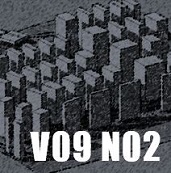Abstract
Natural ventilation is one of the most important strategies for achieving comfort and energy efficiency in hot and humid climates. In this framework, the solar chimneys are devices that promote the increase of air changes in the room and reduction of the energy consumption of buildings. Several authors have used energy performance simulations in their studies regarding this issue. However, reference parameters for an annual numerical assessment of the air flow promoted by a solar chimney were not found in the literature. This article presents an investigation of three methods of simulation of solar chimneys in EnergyPlus: model ThermalChimney, Airflow Network, and HorizontalOpenings. The methods were discussed regarding modeling and its restrictions, with the statement of the advantages and disadvantages of each approach. The airflow simulation results were compared to a numerical model developed through CFD in a previous study, validated with measurements in a constructed prototype. Three statistical indicators, to treat the airflow, were used: Mean Absolute Error, Mean Square Error and Mean Differences. The best result was found for the thermal chimney model, with Average Absolute Error between 37% and 52% in comparison to the others, which floated from 65% to 229%. These results fill a gap in the literature by indicating some guidelines for simulation, and in particular, by analyzing indicators for the comparison between air flows resulting from energy performance simulations of solar chimneys with EnergyPlus.
References
ABNT - ASSOCIAÇÃO BRASILEIRA DE NORMAS TÉCNICAS. NBR 15220-3: Desempenho térmico de edificações - parte 3: Zoneamento bioclimáticos brasileiros e diretrizes construtivas para habitação unifamiliar de interesse social. Rio de Janeiro, 2005.
ANDERSEN, K. Theoretical considerations on natural ventilation by thermal buoyancy. In: Annual meeting of the American Society of Heating, Refrigeration and Air-Conditioning Engineer, 1995, San Diego. Proceedings… San Diego: ASHRAE Transactions, 1995.
ASHRAE - AMERICAN SOCIETY OF HEATING, REFRIGERATING AND AIR-CONDITIONING ENGINEERS. Standard 140: Standard method of test for the evaluation of building energy analysis computer programs. Atlanta, 2011.
ASADI, S.; FAKHARI, M.; FAYAZ, R.; MAHDAVIPARSA, A. The effect of solar chimney layout on ventilation rate in buildings. Energy and Buildings, v. 123, p. 71-78, jul. 2016. doi:https://doi.org/10.1016/j.enbuild.2016.04.047
CHEN, Q. Ventilation performance prediction for buildings: A method overview and recent application. Building and Environment, v. 44, p. 848–858, abr. 2009. doi:https://doi.org/10.1016/j.buildenv.2008.05.025
ENERGYPLUS. EnergyPlus documentation: Engineering Reference: the reference to EnergyPlus calculation. US Department of Energy, 2015. Disponível em: https://energyplus.net/sites/default/files/pdfs_v8.3.0/EngineeringReference.pdf. Acesso em: 25.05.2018.
GUIMARÃES, I.; CARLO, J. Caracterização bioclimática da cidade de Viçosa-MG. In: ENCONTRO NACIONAL DE CONFORTO NO AMBIENTE CONSTRUÍDO, 11., 2011, Armação de Búzios. Anais... Armação de Búzios: ENCAC, 2011. Disponível em: http://www.infohab.org.br/encac/files/2011/Top4art29.pdf. Acesso em: Acesso em: 25.05.2018.
HOSIEN, M.; SELIM, S. Effects of the geometrical and operational parameters and alternative outer cover materials on the performance of solar chimney used for natural ventilation. Energy and Buildings, v. 138, p. 355-367, mar. 2017. doi:https://doi.org/10.1016/j.enbuild.2016.12.041
IMRAN, A.; JALIL J.; AHMED, S. Induced flow for ventilation and cooling by a solar chimney. Renewable Energy, v.78, p. 236-244, jun. 2015. doi:https://doi.org/10.1016/j.renene.2015.01.019
KORONAKI, P. The impact of configuration and orientation of solar thermosyphonic systems on night ventilation and fan energy savings. Energy and Buildings, v. 57, p. 119-131, fev. 2013. doi:https://doi.org/10.1016/j.enbuild.2012.10.054
LEE, K.; STRAND, R. Enhancement of natural ventilation in buildings using a thermal chimney. Energy and Buildings, v. 41, p. 615-621, jun. 2009. doi:https://doi.org/10.1016/j.enbuild.2008.12.006
MACIEL, L. Desenvolvimento de dispositivo de proteção solar com ênfase na ventilação natural: Um método de avaliação baseado em CFD. 2016. Dissertação (Mestrado em Arquitetura e Urbanismo) - Universidade Federal de Viçosa, Viçosa, 2016.
MELO, A.; WESTPHAL, F.; MATOS, M. Apostila do Curso Básico do Programa Energyplus. Laboratório de Eficiência Energética em Edificações. Florianópolis, 2009. Disponível em: http://www.labeee.ufsc.br/sites/default/files/disciplinas/ECV4202_Apostila_EnergyPlus_0.pdf. Acesso em: 25.05.2018.
NEVES, L.; RORIZ, M. Procedimentos estimativos do potencial de uso de chaminés solares para promover a ventilação natural em edificações de baixa altura. Ambiente Construído, v. 2, n. 1, p. 177-192, jan./mar. 2012. doi:http://dx.doi.org/10.1590/S1678-86212012000100012
NEVES, L.; SILVA, S. Analise paramétrica de chaminés solares visando à otimização de desempenho em climas típicos do território brasileiro. Ambiente Construído, v.17, n. 1, p. 163-182, jan./mar. 2017. doi http://dx.doi.org/10.1590/s1678-86212017000100130
SCHULZE, T.; EICKER, U. Controlled natural ventilation for energy efficient buildings. Energy and Buildings, v. 56, p. 221-232, jan. 2013. doi:https://doi.org/10.1016/j.enbuild.2012.07.044
SHI, L.; ZHANG, G. An empirical model to predict the performance of typical solar chimneys considering both room and cavity configurations. Building and Environment, v. 103, p. 250-261, jul. 2016. doi:https://doi.org/10.1016/j.buildenv.2016.04.024
SHI, L.; ZHANG, G.; CHENG, X.; GUO, Y.; WANG, J.; CHEW, M. Developing an empirical model for roof solar chimney based on experimental data from various test rigs. Building and Environment, v. 110, p. 115-128, dez. 2016. doi:https://doi.org/10.1016/j.buildenv.2016.10.002
ZHAI, X.; SONG, Z.; WANG, R. A review for the applications of solar chimneys in buildings. Renewable and Sustainable Energy Reviews, v.15, p. 3757-3667, out. 2011. doi:https://doi.org/10.1016/j.rser.2011.07.013
ZHANG, R.; LAM, K.; YAO, S; ZHANG, Y. Coupled EnergyPlus and computational fluid dynamics simulation for natural ventilation. Building and Environment, v. 68, p. 100-113, out. 2013. doi:https://doi.org/10.1016/j.buildenv.2013.04.002
I accept that PARC Research in Architecture and Building Construction journal perform, on the original file approved for publication, revisions and modifications in orthoghaphic, grammar and standard issues.
I give to PARC Research in Architecture and Building Construction journal the rights of first publication of the revised version of my paper, licensed under the 'Creative Commons Attribution' license (which allows sharing the work with the recognition of first authorship and publication in this journal).

